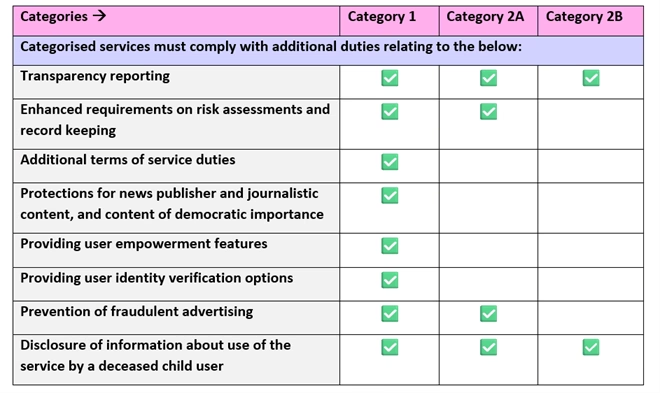Ofcom is seeking evidence to inform its codes of practice and guidance on the additional duties that will apply to some of the most widely used online sites and apps, designated as “categorised” services, under the Online Safety Act.
Under the Act, all in-scope tech firms must put in place appropriate safety measures to protect users from online harms. In addition, some online services will have to comply with extra requirements if they fall into one of three categories, known as Category 1, 2A or 2B.
The extra duties include giving users more tools to control what content they see, ensuring protections for news publisher and journalistic content, preventing fraudulent advertising and producing transparency reports. Different duties apply, depending on which category a service falls into.

The Act requires Ofcom to produce codes of practice and guidance outlining the steps that companies can take to comply with the additional duties. It is calling for evidence from industry, expert groups and other organisations to help inform and shape its approach. A formal consultation on the draft codes and guidance will follow in 2025.
Advice to Government on categorisation thresholds
Alongside this, Ofcom has also published its advice to the UK government on the thresholds which would determine whether or not a service falls into Category 1, 2A or 2B. It advises that:
Category 1: should apply to services which meet either of the following conditions:
- Condition 1 – uses a content recommender system; and has more than 34 million UK users on the user-to-user part of its service, representing around 50% of the UK population; or
- Condition 2 – allows users to forward or reshare user-generated content; and uses a content recommender system; and has more than 7 million UK users on the user-to-user part of its service, representing around 10% of the UK population.
Category 2A: should apply to services which meet both of the following criteria:
- is a search service, but not a “vertical” search service (search services that are only focused on a specific topic or type of content); and
- has more than 7 million UK users on the search engine part of its service, representing around 10% of the UK population.
Category 2B: should apply to services which meet both of the following criteria:
- allows users to send direct messages; and
- has more than 3 million UK users on the user-to-user part of the service, representing around 5% of the UK population.
Taking Ofcom’s advice into consideration, the Secretary of State must set the threshold conditions in secondary legislation. Once passed, Ofcom will then gather information, as needed, from regulated services and produce a published register of categorised services.




